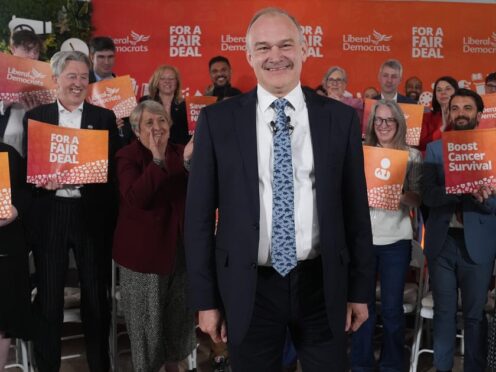
Around 1.8 million people cannot reach their GP when they want help, the Liberal Democrats have suggested.
The party said that patients are being “catastrophically let down” as they struggle to access GP services.
Recent Office for National Statistics suggest that around one in every 14 British people could not reach their GP when they last tried.
Some 1,400 people aged 16 and over who had tried to access GP care in the last month were surveyed by the ONS.
And among those who had tried to contact their local surgery, 7% said they did not manage to make contact, according to the poll which took place between May 22 and June 2.
The Liberal Democrats said that if these figures are extrapolated, this equates to 1.84 million people across the country.
Launching its 2024 manifesto, the party has pledged that patients will have the right to see a GP within seven days, or within 24 hours if they urgently need to.
We will improve access to dentistry and recruit the extra GPs we need. pic.twitter.com/NNfGHGhLIM
— Liberal Democrats (@LibDems) June 10, 2024
And it promised 8,000 more GPs to deliver the service.
The Liberal Democrats also promised to establish a Strategic Small Surgeries Fund to help services in rural and remote areas.
The 2019 Conservative Party manifesto pledged that there would be 6,000 more doctors in general practice.
In December 2019, there were 28,129 fully qualified GPs working in the NHS in England, according to NHS figures. In March 2024, this figure stood at 27,574.
This figure includes part-time GPs and locums, but not trainees.
When counting all regular GPs, including part-time and trainees but not including locums, the number is up over this period from 33,514 to 36,589, a rise of 3,076.
Liberal Democrat leader Sir Ed Davey, said: “The Conservatives promised to recruit more GPs, instead we’ve seen the number of qualified GPs plummet since the last election.
“Patients are being catastrophically let down as millions struggle to contact their GP and get an appointment when they need one. Many people are waiting days to hear back from their GP practice, often anxious or in pain.
“The Liberal Democrats would bring back the family doctor, with 8,000 extra doctors in general practice and a legal right to see your GP in a week or 24 hours if in urgent need.
“We would also bring in a rescue fund to protect GP practices in rural areas after years of closures that have left communities struggling to access primary care.”
Ruth Rankine, director of the primary care network at the NHS Confederation, said: “We know there is variation in how easy it is for patients to access GP services which can cause huge frustration.
“This stems from the continued underfunding of general practice to cope with increasing levels of demand and complexity which has not kept pace with population increases and pressures elsewhere in the system.
“With around 100,000 vacancies in the NHS, the only way this can be tackled is by properly funding the NHS Long Term Workforce Plan. That is why we want a commitment from all political parties that the plan will be fully funded and delivered if they form the next government.”
The Conservative Party has been approached for comment.

Enjoy the convenience of having The Sunday Post delivered as a digital ePaper straight to your smartphone, tablet or computer.
Subscribe for only £5.49 a month and enjoy all the benefits of the printed paper as a digital replica.
Subscribe